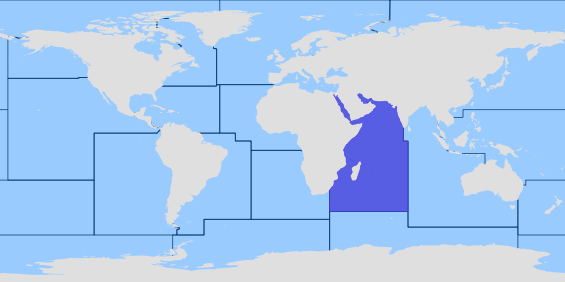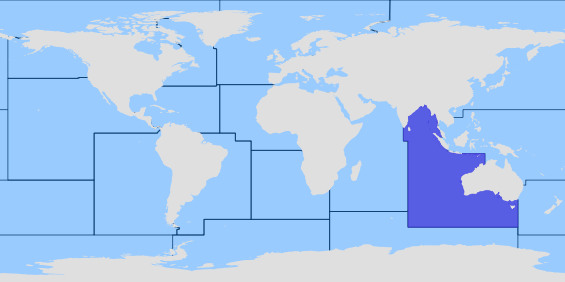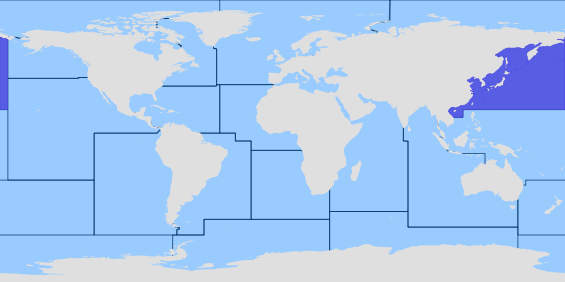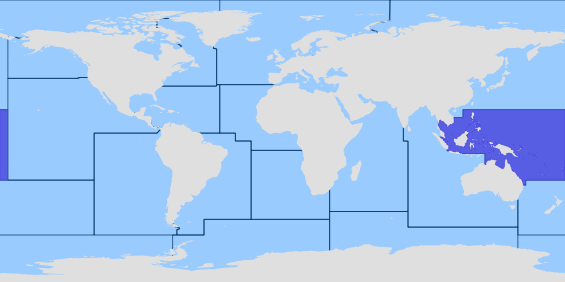angolThe carapace has the median teeth before the crevical groove blunt and inconspicuous: the rostral tooth is reduced to a tubercle, the pregastric tooth is replaced by a double row of 1 or 2 tubercles and a few inconspicuous median tubercles. The gastric tooth is the most conspicuous, it isbroad and blunt and bears a double row of tubercles. The surface of the carapace is very uneven and the tubercles are high. Between the postrostral and branchial carinae there are a few tubercles and many smooth areas. The abdomen shows a distinct median longitudinal carina on somites 2 to 5, that of somite 3 is by far the highest, and (like the one fo somite 4) bears numerous tubercles laterally. Somite 1 is quite smooth, and has the transverse groove only slightly noticeable in the extreme lateral parts. The exposed part of the following somites show no arborescent pattern, but in each somite there is a wide transverse groove there. In somite 2, both before and behind this groove there is a perfectly smooth broad ridge, a character in which the species differs from most others. In the following somites these ridges are tuberculate. In somites 4 to 6 the posterior margin is tuberculate. The fourth antennal segment has a sharp and high oblique median carina. Outside the carina the upper surface of the segment shows a row of tubercles. The outer margin of the segment bears 4 or 5 teeth (apical tooth of the segment not included), the inner margin has 5 to 7 teeth of irregular size. The anterior margin of the thoracic sternum is deeply U-shapedly incised. Each of the thoracic sternites bears a rounded median tubercle. The dactyli of pereiopods 3 to 5 show two short fringes of hair each. Colour: the dorsal surface of the body is greyish or purplish brown with darker spots. The distal segment of the antenna is often lighter. The first abdominal somite shows dorsally often a dark blue colour (Ref. 252).
Fordítás megtekintése
Angol nyelvről fordította a BING
A jelen fordítás csupán tájékoztató jellegű. A forrásnyelvi szöveg korlátozott minőségének következtében a morfológiai leírások kizárólag angol nyelven, a rendszer bétaverziójában érhetők el. Többnyelvű tájékoztatás a későbbi kiadásokban áll majd rendelkezésre.
magyarA páncél van a medián fogak, mielőtt a crevical groove, tompa és feltűnő: a rostralis fog csökken, a tuberkulózis, a pregastric fog helyébe egy kétsoros, 1 vagy 2 alkarhoz és néhány feltűnő medián alkarhoz. A gyomor fog, a legszembetűnőbb, hogy isbroad és tompa, és viseli a kétsoros alkarhoz. A páncél felülete nagyon egyenetlen, és az alkarhoz magasak. Között a postrostral és Kopoltyús carinae vannak néhány alkarhoz és sok sima. A has mutatja egy különálló középső hosszanti carina somites 2-5, szomit 3, messze a legmagasabb, és (mint az egyik fo szomit 4) viseli számos alkarhoz oldalirányban. Szomit 1 teljesen sima, és a keresztirányú groove csak alig észrevehető a szélsőséges oldalsó részek. A következő somites kitett része mutat nincs Babércserjés minta, de minden szomit van egy széles keresztirányú groove ott. Szomit 2 előtt és mögött ez a horony van egy tökéletesen sima széles ridge, egy karakter, amely a faj különbözik a legtöbb mások. A következő somites ezen a tuberculate. Somites 4-6-ban a hátsó Margó, tuberculate. A negyedik antennal szegmens van éles és magas ferde medián carina. Kívül a carina a felső felületén a szegmens mutatja egy sor alkarhoz. A külső Margó a szegmens viseli 4 vagy 5 fogak (apikális fog a szegmens nem tartalmaz), a belső margó a 5-7 a fogak szabálytalan méretű. Az elülső mozgásteret a mellkasi szegycsont mélyen U-shapedly metszeni. A háti sternites viseli egy lekerekített medián tuberkulózis. A dactyli pereiopods 3-5 rövid peremén két haj egyes Térkép. : A háti felületén a test színe szürkés vagy lilás barna, sötétebb foltokkal. A disztális szegmens az antenna, gyakran könnyebb. Az első hasi szomit dorsalis gyakran mutatja, sötét kék színű (Ref.: 252).
 A kép nem elérhető
A kép nem elérhető


